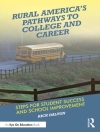‘My experience teaching the lessons to students helped me understand the importance of self-reflection. The students were able to reflect on their own abilities in learning. Defining who you are as a learner is informative and empowering.’
—Robert Grubb, Teacher
Los Angeles City Unified School District, CA
‘Teaching students how to be ′lifelong learners′ can be realized by helping them develop a sense of responsibility for their learning. These lessons provide that opportunity for students.’
—Paige A. Mc Ginty, Doctoral Student in Teacher Education, Multicultural Societies
University of Southern California
Discover how the Parallel Curriculum Model can help urban students achieve!
Teachers in urban schools often find that their students have learning needs that go beyond a standards-based curriculum. Originally developed for gifted learners, the Parallel Curriculum Model is highly effective for helping students of all backgrounds reach new levels of achievement. This book presents a high-quality curriculum that builds key learning skills for academic success for students of diverse cultural and socioeconomic backgrounds.
Easily taught alongside a regular curriculum for Grades K–8, this hands-on resource focuses on student potential in four areas: as scholars, active classroom participants, self-advocates, and articulate presenters. Educators will learn how to forge connections between standard curriculum content and the personal traits that students need to thrive in school and beyond. Readers will find:
- An enriched, multidisciplinary curriculum for developing resiliency, self-motivation, and collaboration skills in urban youth
- Sixteen field-tested and ready-to-use lesson plans and related reproducibles
- Thought-provoking questions and interactive exercises that promote critical and creative thinking and classroom discussion
Mentor your students in developing lifelong skills for learning and success through a holistic approach that challenges and inspires.
قائمة المحتويات
Preface: Bridging the Gap
Acknowledgments
About the Authors
Introduction: The Purposes of the Parallel Curriculum Model
Multiple Applications and the Parallel Curriculum Model
Flexibility of the Parallel Curriculum Model
Structure of the Parallel Curriculum Model
Responding to Student Diversity With Curriculum Diversity
Urban Classroom Dynamics
Developing an Academic Skill Set
Introduction to the PCM Focus Lessons
Lesson Plan Format
Implementing the Lesson Plan
Lesson Plan Scheduling
Depth and Complexity
1. Scholarly Dispositions
Lesson A: Developing an Interest (I)
Lesson B: Developing an Interest (II)
Lesson C: Developing Tenacity
Lesson D: Determining Relevance
Lesson E: Confronting Failure
Lesson F: Intellectual Strengths
Lesson G: Receptivity to Experience
2. Participation Skills
Lesson A: Questioning
Lesson B: Asking for Clarification
Lesson C: Restating
Lesson D: Acknowledging Peers
3. Self-Advocacy
Lesson A: Establishing a Voice
Lesson B: Building Confidence
Lesson C: Establishing an Identity
Lesson D: Multiple Group Membership
4. Presentation Skills
Lesson A: Talking Steps
Lesson B: Ways to Say It
Lesson C: Engaging the Audience
Lesson D: Staying on Target
Appendix A: Designing Curriculum Using the Parallel Curriculum Model
Appendix B: Teaching the Prompts of Depth and Complexity
References
Index
عن المؤلف
Carol Ann Tomlinson‘s career as an educator includes 21 years as a public school teacher. She taught in high school, preschool, and middle school, and worked with heterogeneous classes as well as special classes for students identified as gifted and students with learning difficulties. Her public school career also included 12 years as a program administrator of special services for advanced and struggling learners. She was Virginia’s Teacher of the Year in 1974. She is professor of educational leadership, foundations, and policy at the University of Virginia’s Curry School of Education; a researcher for the National Research Center on the Gifted and Talented; a codirector of the University of Virginia’s Summer Institute on Academic Diversity; and president of the National Association for Gifted Children. Special interests throughout her career have included curriculum and instruction for advanced learners and struggling learners, effective instruction in heterogeneous settings, and bridging the fields of general education and gifted education. She is author of over 100 articles, book chapters, books, and other professional development materials, including How to Differentiate Instruction in Mixed-Ability Classrooms, The Differentiated Classroom: Responding to the Needs of All Learners, Leadership for Differentiated Schools and Classrooms, the facilitator’s guide for the video staff development sets called Differentiating Instruction, and At Work in the Differentiated Classroom, as well as a professional inquiry kit on differentiation. She works throughout the United States and abroad with teachers whose goal is to develop more responsive heterogeneous classrooms.












